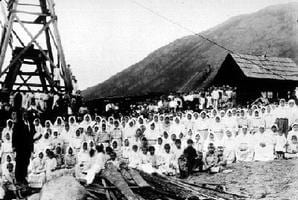Recently we did a massive project about ethical dimensions. The driving question for that project is How can we present past actions and decisions through images to help us make decisions of what is fair or unjust? For this blog post, what I’m going to be talking about what I think are the three most important milestones. Those milestones are 1, 2, and 4.
The first milestone I’m going to be talking about is milestone one what we had to do for milestone one was we had to find an event within the last 30 years involving indigenous peoples and write a one-page paper explaining the who, what, when, where, and why. For my paper, I talked about what was going on with the Wet’suwet’en barricades and protests. Overall this was an exciting assignment, which I enjoyed because I had already done some research into this topic since it was super interesting.

The second milestone I’m going to be talking about is milestone 2. What we had to do milestone two was we got our groups (mine was me and meg), then we had to pick a topic ours was the Doukhobors. The next step was to do a worksheet that we would fill with the research we had done on our subject. Overall this was a significant milestone that I think was very important because it helped build our understanding of our topic. It was just really interesting to learn more about the Doukhobors (they protested by running around nude).

The last milestone I’m going to be talking about is milestone 4. What we had to do for milestone four was after finishing the images, we had to present them to the class in the form of a keynote presentation. I could have done better in my presentation if I had practiced more. The reason I say that is because I was a little unsure what to say in my presentation, so I felt like I was Stalling in between my words. Other than that, I think we had a good presentation, and our images turned out well.
In conclusion, this was a very interesting project, and I enjoyed reading and learning about Louis Riel and the Doukhobors. If I were to do this project again, I probably would have had better communication with my partner. I would also have helped more with the images because I felt like it wasn’t enough just doing one image. Now finally, the competency’s connect and understand ethical dimensions. I think I meet the competency connect because, throughout the project, I looked at the textbooks and the graphic novel we read through other points of view to help me understand how other people and I understand the texts. I think I meet the competency Understand Ethical Dimensions because I have shown my ability to decide if actions and decisions of the past were fair or unjust. I showed this through my active role in the debate where the discussed if Louis Riel’s execution was just or unjust. I also demonstrated this competency through all of the writing we did about if he was a hero or villain.







